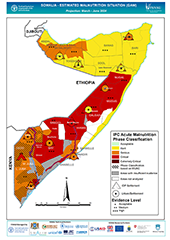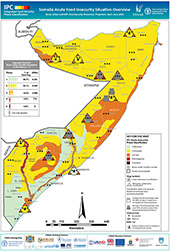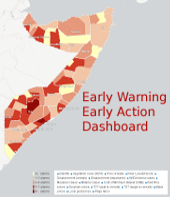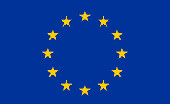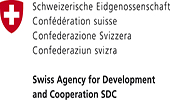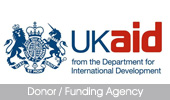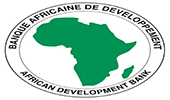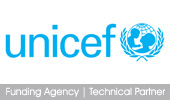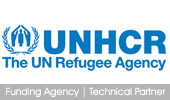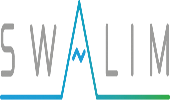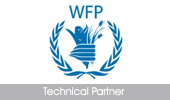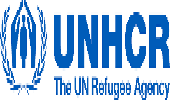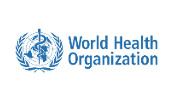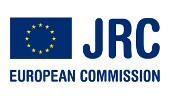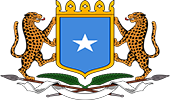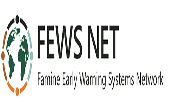FSNAU-FEWS NET 2021 Post Gu Technical Release - September 9, 2021
Issued: September 9, 2021
Approximately 3.5 million people in Somalia face acute food insecurity Crisis (IPC Phase 3) or worse outcomes in late 2021
1.2 million children likely to be acutely malnourished
September 9, 2021, Mogadishu/Washington – Nearly 3.5 million people across Somalia are expected to face food consumption gaps or depletion of livelihood assets indicative of Crisis (IPC Phase 3)[1] or worse outcomes through the end of the year, in the absence of humanitarian assistance. The key drivers of acute food insecurity in Somalia include the combined effects of poor and erratic rainfall distribution, flooding and conflict. Moreover, approximately 1.2 million children under the age of five are likely to be acutely malnourished, including nearly 213 400 who are likely to be severely malnourished. It is likely that sustained, large-scale humanitarian food assistance and government support since January 2021 have mitigated the magnitude and severity of food insecurity. Despite minimal damage in early to mid-2021, Desert Locust will continue to pose a serious risk to both pasture availability and crop production across Somalia. Available forecasts indicate an increased likelihood of below-average rainfall during the 2021 Deyr (October-December) season across most of the country, which would adversely affect food security and nutrition outcomes. These findings are based on the 2021 post-Gu seasonal food security and nutrition assessment conducted across Somalia in June and July 2021. The assessment and the subsequent analyses were jointly led by the Food Security and Nutrition Analysis Unit (FSNAU, a project managed by the Food and Agriculture Organization of the United Nations) and the Famine Early Warning Systems Network (FEWS NET, a project funded by USAID) with the active participation of government institutions, UN, and NGO partners.
A delayed start, early end, and erratic rainfall distribution characterized the April to June 2021 Gu rainfall season. As a result, cumulative rainfall was below the 40-year average across much of the country, especially in central and southern Somalia. The poor rains led to below-average Gu crop production in southern Somalia and poor crop harvest prospects in agropastoral livelihood zones in the Northwest. Although heavy rains between late April and mid-May partially replenished pasture and water resources, these resources are inadequate to support normal livestock production until the start of Deyr season rainfall in October. Furthermore, floods caused further population displacement and damaged crops and farmland in riverine areas of Hiiraan, Shabelle, and Juba regions.
2021 Gu season cereal production in southern Somalia is estimated at 48 900 tons, which is 60 percent below the 1995-2020 average, mainly due to poor and erratic rainfall, insecurity, river floods and shortage of farm inputs. In the Northwest, 2021 Gu/Karan cereal production, which will be harvested in November, is estimated at 14 500 tons, which is 63 percent below the 2010-2020 average, mainly due to poor and erratic rainfall.
Rural populations are experiencing multiple declines in food and income sources. In pastoral areas, large-scale livestock migration was reported from rain-deficit areas to areas that received relatively better rainfall. There are reports of atypical livestock migration from Gedo to Juba regions and neighbouring Ethiopia as well as from coastal areas of Nugal and Northern Mudug to Hawd Pastoral areas. Milk production and availability range from near average to poor in northern and central regions but are mostly near average in southern Somalia, with the exception of Gedo and Bakool regions, where milk availability is low due to unfavorable pasture and browse conditions. In many pastoral livelihood zones, poor households with will face moderate to large food consumption gaps through late 2021 due to below-average or poor milk availability, a limited number of saleable animals, and increased indebtedness related to increased expenditures on food and water.
In agropastoral livelihood zones, where the main shocks include erratically distributed rainfall and conflict, poor households have experienced substantial crop losses and low income from agricultural employment. With few alternative sources of food and income after current food stocks are depleted, they face moderate to large food consumption gaps through late 2021. In riverine livelihood zones along the Shabelle and Juba rivers, seasonal floods inundated farmland, destroyed crops, and displaced local populations, leading to significant crop losses and the loss of income from agricultural employment. Consequently, a significant proportion of poor households in riverine areas will also face moderate to large food consumption gaps through late 2021.
A majority of the estimated 2.9 million Internally Displaced Persons (IDPs) across Somalia are poor with limited livelihood assets, few income-earning opportunities, low communal support and high reliance on external humanitarian assistance. As a result, a significant proportion of IDPs (in both rural and urban settlements) face moderate to large food consumption gaps through late 2021. Some of the urban poor across Somalia also continue to face moderate to large food consumption gaps over the same period, partly due to a slowdown in economic activities in urban areas and the rising costs of food and other essential non-food items.
Based on the results of household surveys and field assessments conducted in June and July 2021, more than 2.2 million people face Crisis (IPC Phase 3) or worse outcomes in the presence of planned and likely humanitarian assistance during the July to September 2021 period. An additional 3.4 million people are Stressed (IPC Phase 2), bringing the total number of people experiencing acute food insecurity to 5.6 million. Humanitarian assistance for food security and nutrition, as well as government support, reached more than 1.6 million per month on average between January and June 2021. This assistance likely prevented the worsening of food security and nutrition outcomes across many parts of Somalia. Available humanitarian assistance plans indicate a similar number of people will likely receive assistance through September 2021.
From October to December 2021, food insecurity is expected to further deteriorate among poor rural, urban, and displaced populations due to the impacts of anticipated, below-average 2021 Deyr (October-December) season rainfall, continued insecurity and other food security related risk factors, including rising food prices and cost of living, declining availability of milk for both consumption and sale, and a likely reduction in agricultural employment opportunities during the forthcoming Deyr season. Without sustained humanitarian food assistance, 3.5 million people across Somalia are expected to face Crisis (IPC Phase 3) or worse outcomes between October and December 2021. An additional 3.7 million people are expected to be Stressed (IPC Phase 2), bringing the total number of people facing acute food insecurity to 7.2 million. The October-December 2021 projections do not factor in the potential impact of food assistance, as information on planned and funded food and cash assistance through December 2021 was not available at the time of the analysis. Humanitarian assistance must be sustained through December 2021 to prevent Crisis (IPC Phase 3) or Emergency (IPC Phase 4) outcomes for 3.5 million people. Livelihoods support is also required for people that are Stressed (IPC Phase 2) or worse.
Region | Population (2020/21) | Number of Acutely Food Insecure People (Rural, IDP, and Urban Combined) | |||||
Current (July-September 2021) | Projected (October-December 2021) | ||||||
Stressed (IPC 2) | Crisis (IPC 3) | Emergency (IPC 4) | Stressed (IPC 2) | Crisis (IPC 3) | Emergency (IPC 4) | ||
Awdal | 538,209 | 112,780 | 36,290 | 22,290 | 125,840 | 54,090 | 25,410 |
Woqooyi Galbeed | 1,224,715 | 250,450 | 82,710 | 55,700 | 269,410 | 141,570 | 62,330 |
Togdheer | 728,224 | 170,820 | 169,820 | 60,100 | 180,600 | 175,600 | 87,430 |
Sool | 464,487 | 108,510 | 70,200 | 22,260 | 119,340 | 81,690 | 22,260 |
Sanaag | 362,723 | 71,640 | 57,570 | 9,570 | 84,270 | 94,640 | 22,570 |
Bari | 1,042,591 | 218,660 | 146,480 | 8,190 | 226,410 | 180,960 | 15,930 |
Nugaal | 534,573 | 150,760 | 76,710 | 6,210 | 153,050 | 95,460 | 7,640 |
Mudug | 1,243,526 | 321,770 | 179,970 | 7,670 | 363,620 | 234,980 | 21,090 |
Galgaduud | 687,573 | 215,910 | 86,440 | 3,900 | 234,300 | 143,780 | 19,910 |
Hiraan | 427,124 | 80,620 | 60,790 | 9,820 | 88,350 | 96,250 | 26,470 |
Middle Shabelle | 855,895 | 133,950 | 113,560 | 17,860 | 141,850 | 182,220 | 47,960 |
Lower Shabelle | 1,347,934 | 238,660 | 109,800 | 18,240 | 238,660 | 140,560 | 23,820 |
Bakool | 459,747 | 70,110 | 42,730 | 7,610 | 91,340 | 63,640 | 17,580 |
Bay | 1,055,913 | 212,550 | 180,580 | 38,950 | 262,830 | 286,110 | 83,670 |
Gedo | 736,704 | 231,640 | 105,960 | 6,430 | 241,280 | 140,940 | 16,760 |
Middle Juba | 363,930 | 75,700 | 46,840 | 5,230 | 91,250 | 76,160 | 15,980 |
Lower Juba | 979,997 | 225,270 | 110,730 | 8,840 | 262,400 | 187,180 | 33,520 |
Banadir | 2,683,312 | 492,900 | 224,570 | - | 538,100 | 449,130 | 90,400 |
TOTAL | 15,737,176 | 3,382,700 | 1,901,750 | 308,870 | 3,712,900 | 2,824,960 | 640,730 |
According to the results of 35 separate nutrition surveys conducted by FSNAU and partners in June and July 2021, the overall median Global Acute Malnutrition (GAM) in Somalia remained Serious (11.1% weight-for-height z-score). The drivers of acute malnutrition include high morbidity, low immunization, low vitamin-A supplementation, reduced access to milk, and food insecurity. Urgent treatment and nutrition support are required for approximately 1.2 million children under the age of five years (total acute malnutrition burden), who will likely face acute malnutrition between August 2021 and July 2022, including 213 400 who are likely to be severely malnourished. Integrated interventions should be provided to support recovery and prevent deterioration in the nutrition situation.
Areas and Populations of Concern
Population groups classified as Crisis (IPC Phase 3) or worse require interventions aimed at reducing food consumption gaps, eradicating acute malnutrition, saving lives, and protecting and saving livelihoods. The following are considered areas of concern and are in need of urgent nutrition and health support interventions. They currently have or are projected to have a GAM prevalence of Critical, indicated by a weight-for-height z-score of 15-29.9 percent or by a mid-upper arm circumference below 125 mm of 10-14.9 percent: Shabelle Riverine, Mogadishu IDPs (Banadir), Gedo Riverine, Dolow Urban (Gedo), Juba Cattle Pastoral, Juba Riverine, Southern Inland Pastoral of Elberde (Bakool), Bay Agropastoral, Baidoa IDPs (Bay), Rural Hiiran (Beletwein, Jalalaqs and Buloburte Districts), Beletwein Urban and Beletweyne IDPs (Hiiran), Galkacyo IDPs (Mudug), Bosasso IDPs (Bari) and Hawd Pastoral of Central Region.
FSNAU and FEWS NET will continue to monitor conditions and outcomes and report on the situation. All information will be made available through www.fsnau.org and www.fews.net. For more information, please contact: Willi Swanson, Communications Specialist, FAO Somalia, Tel: +254 -20-4000000, Email: William.Swanson@fao.org or Lark Walters, Senior Analyst, Famine Early Warning Systems Network (FEWS NET), email: somalia@fews.net.
To download full release click here
